Love Across Border
“Love Across Borders” explores the evolving dynamics of intercultural and interracial marriages, focusing on two couples: a young Chinese wife and her American husband in their twenties, and a Taiwanese wife with her American husband, who have shared over two decades together. This project examines how these couples navigate the intersections of identity, tradition, and love, while adapting to the complexities of blending cultures in modern America.
Interracial marriages have become increasingly common in the United States. In 2015, 17% of newlyweds were married to someone of a different race or ethnicity, a significant rise from 3% in 1967. Among Asian Americans, intermarriage rates are notable: 29% of newlywed Asian women under 30 are intermarried, and 26% of Asian men in their 40s have a spouse of a different race or ethnicity.
Despite their growing prevalence, these unions present unique challenges, especially for Asian-American couples. The interplay of family expectations, cultural heritage, and Western individualism creates a distinct dynamic. This project investigates these themes by focusing on how the couples resolve everyday differences in food preferences, holiday traditions, and the cultural meanings they bring into their shared spaces.
Through visual narratives, “Love Across Borders” highlights moments of compromise and connection—gestures as small as learning to use chopsticks or as significant as deciding how to celebrate a festival. These stories reveal the strategies the couples use to overcome cultural divides and create a shared life, offering insight into how love can foster understanding across boundaries. By juxtaposing the experiences of a younger couple with those of a seasoned partnership, the project draws attention to how these negotiations evolve over time and what they reveal about the resilience of love in a multicultural world.
In a time when cultural identity is both celebrated and contested, “Love Across Borders” offers a timely reflection on the universal challenges of partnership and the extraordinary beauty of connection that transcends cultural divides.

Shawn Krol and Naiyou Wang met on a dating app and were married in 2022. Shawn is from New York State and Naiyou is from China. Olivia Todd and John Todd have been married for 26 years after being introduced by a mutual friend. Olivia, originally from Taiwan, and John, from New York State. Shawn Krol and Naiyou Wang pose in traditional Chinese attire, a custom for marriage photography in China. The process involves changing into four different outfits and spending an entire day capturing these moments. For Shawn, this tradition felt unfamiliar and physically uncomfortable, highlighting the cultural adjustments and compromises often required in cross-cultural marriages. Olivia and John Todd, married for 26 years, pose in the backyard of their home. Reflecting on their relationship, Olivia shares, ‘Distance makes relationships longer.’ Rooted in cultural differences, they often struggle to maintain meaningful interactions now that both are retired and spending more time at home. Their story highlights the challenges of sustaining connection in cross-cultural marriages over decades.

Shawn Krol and Naiyou Wang display their tattoos, a shared form of self-expression with different cultural meanings. For Naiyou, who got her first tattoo after meeting Shawn, it represents a blend of her Chinese heritage with Western influences. Tattoos, often seen as taboo in some Asian cultures, symbolize individuality and personal milestones in Western contexts. This contrast mirrors the balancing act of cross- cultural marriages, where partners navigate merging traditions with personal identity. Olivia Todd playfully swings a fist at John Todd, capturing a moment of humor in their long-standing marriage. Their lighthearted dynamic reflects how humor can serve as a bridge in relationships shaped by cultural and generational differences. Yet, this playful interaction also hints at the deeper complexities of maintaining emotional intimacy and shared interests over decades, particularly in cross-cultural partnerships where differing norms of affection and communication come into play.
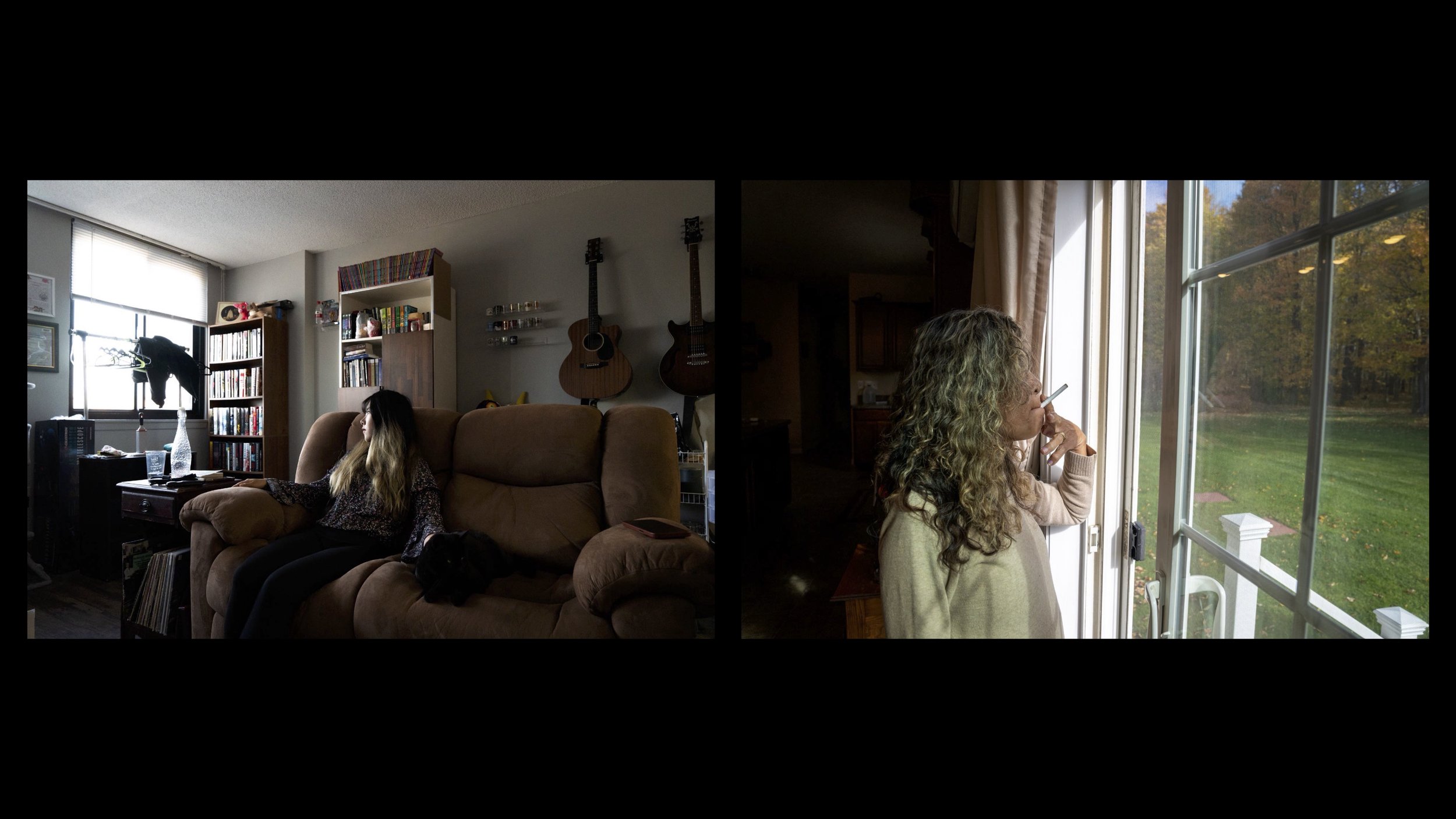
Naiyou Wang sits quietly on the sofa, gazing outside, a moment that speaks to the isolation and introspection often felt by immigrants in cross-cultural marriages. Being far from her family and cultural roots, Naiyou navigates the emotional complexities of adapting to a new environment while maintaining her individuality. Her contemplative pose captures the subtle tension between personal identity and the adjustments required in a shared life across cultures. Olivia Todd lights a cigarette, a habit she discourages in others but continues herself. This contradiction reflects the personal struggles and coping mechanisms that can surface in long-term relationships, particularly in cross-cultural unions. Olivia’s smoking may signify deeper tensions, such as the challenges of aligning personal habits with shared values or adapting to the dynamics of retirement. Her quiet moment underscores the complexity of balancing personal choices within the broader framework of marriage and cultural expectations.
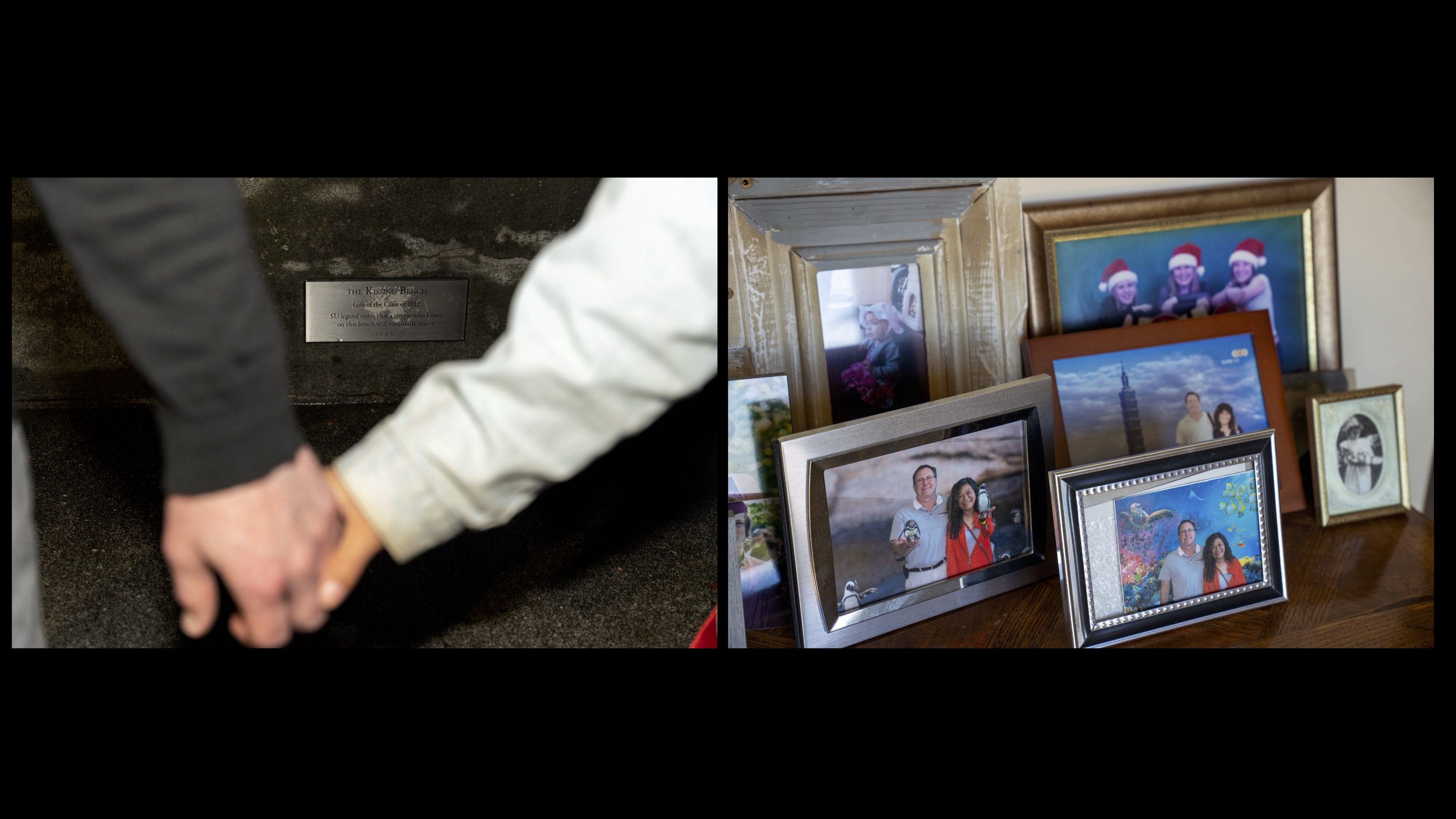
Naiyou Wang and Shawn Krol walk past Syracuse University’s iconic Kissing Bench, a romantic tradition symbolizing lasting love. For Shawn, the bench reflects familiar local customs, but for Naiyou, it holds little cultural resonance, underscoring how cross-cultural couples navigate the emotional weight of traditions that may not equally connect to their identities. Their differing relationships to these symbols highlight the challenges of blending personal and cultural narratives in their marriage. Olivia and John Todd’s travel and family photos fill their home with memories of past adventures and familial bonds. Both brought children into their marriage, creating a blended family influenced by differing cultural values. While these images celebrate shared moments, their current dynamic as retirees reveals the strain of maintaining meaningful connection, as cultural differences and a lifetime of habits sometimes pull them into separate worlds. Their story illustrates the evolving nature of intimacy in long-term, cross-cultural marriages.
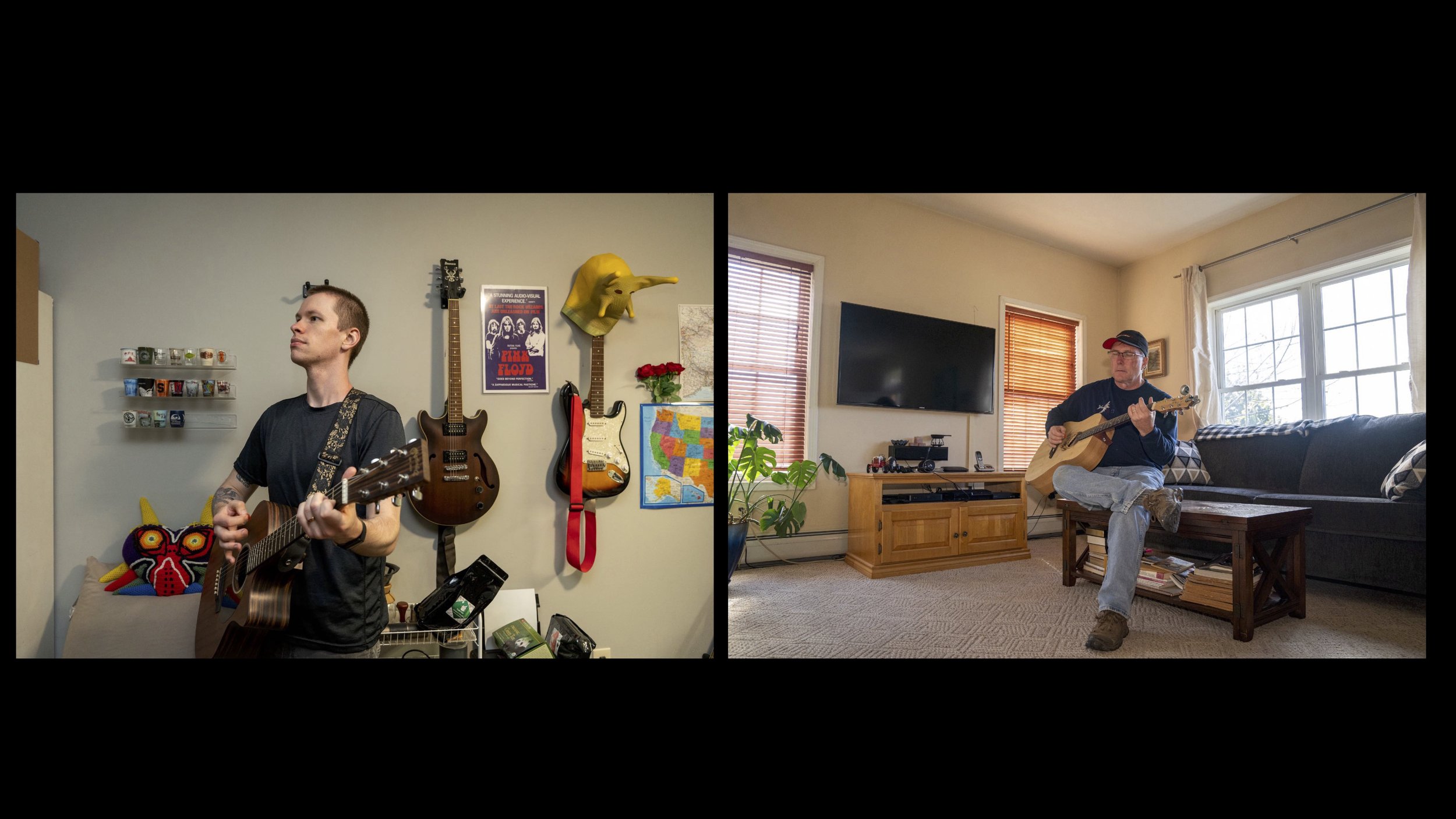
Shawn Krol and John Todd both hold guitars, a shared passion that symbolizes their individuality and self-expression. For Shawn, who has played since childhood, music is a personal joy deeply rooted in Western values of pursuing one’s passions. This contrasts with traditional Asian cultural norms, where leisure activities might take a backseat to family and community responsibilities, highlighting the subtle cultural differences he navigates in his marriage with Naiyou. For John, a former band member, the guitar serves as a connection to his past and a solitary retreat in his retirement. While Shawn may use music as a way to engage with Naiyou, John’s guitar-playing reflects his independent enjoyment, especially as he and Olivia spend much of their time pursuing separate interests. The image illustrates how a shared passion can take on different meanings and roles, shaped by the intersections of culture, generation, and individual experience.
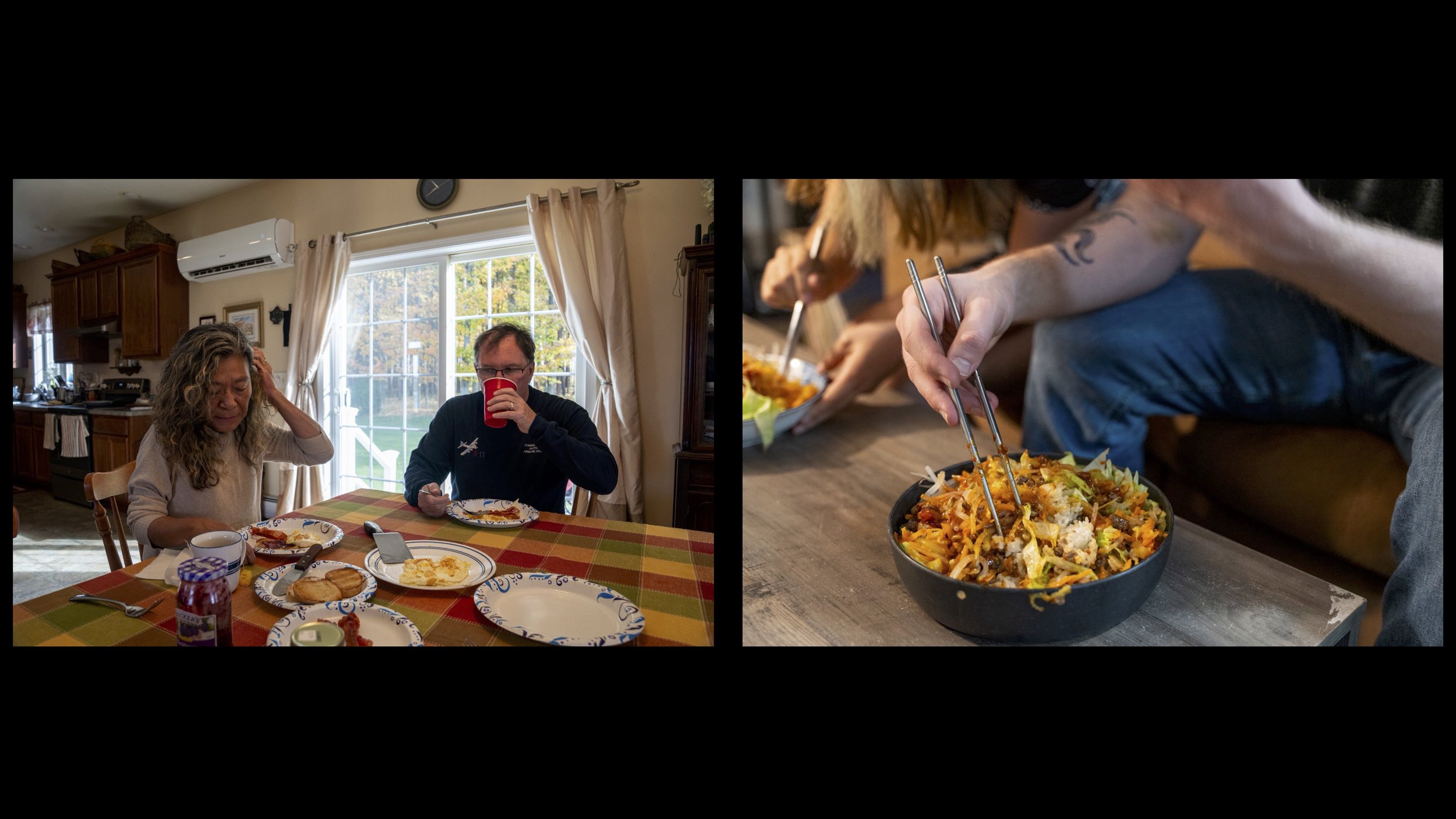
Food serves as a lens into the cultural dynamics of cross-cultural marriages. On the left, Naiyou Wang prepares Chinese meals daily, a way of preserving her heritage and sharing it with her husband, Shawn Krol. Shawn’s enjoyment of these meals and his mastery of chopsticks reflect his willingness to embrace Naiyou’s culture, creating a shared culinary experience that bridges their cultural divide. This everyday act symbolizes how younger cross-cultural couples actively incorporate traditions into their lives as part of their evolving identities. On the right, Olivia Todd has largely adapted to American cuisine after more than three decades in the U.S. Her meals, often consisting of bacon, eggs, and white bread, contrast sharply with the Taiwanese dishes she once prepared but no longer remembers how to make. This shift reflects how, over time, cultural traditions can fade as adaptation to a new environment takes precedence. Olivia and John’s story highlights the generational impact on cultural integration, as time and familiarity can influence the role of heritage in daily life.
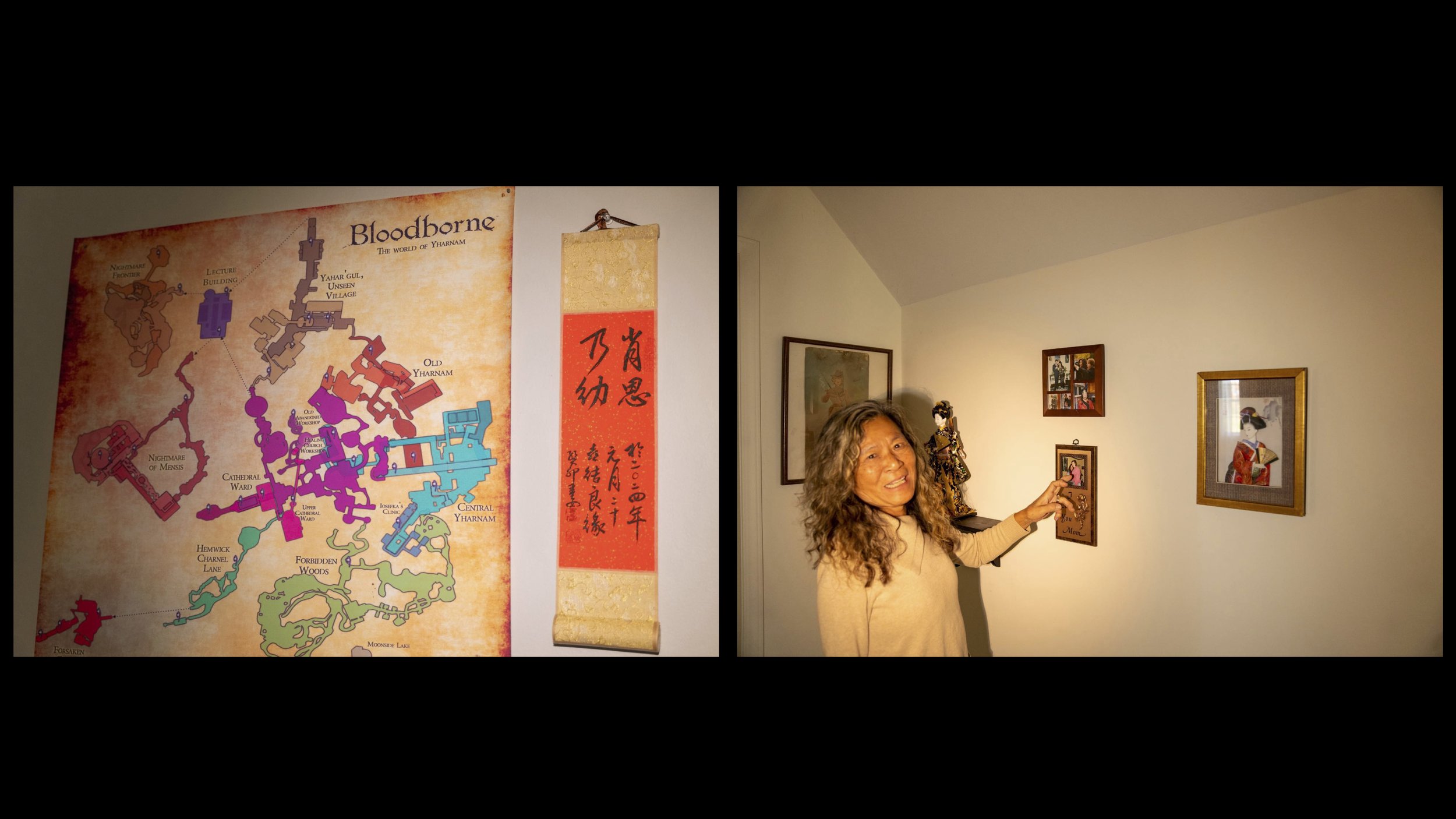
In their shared home, Naiyou Wang and Shawn Krol’s wedding calligraphy hangs next to a map from Shawn’s favorite video game, symbolizing the balancing act of merging cultural heritage with personal interests. The calligraphy, featuring their names and wedding date in Chinese, reflects Naiyou’s emphasis on tradition and her desire to keep her heritage alive, while Shawn’s map speaks to his individuality and passions. Together, these artifacts reveal the negotiation required in cross-cultural marriages to create a shared space that respects and celebrates both partners’ identities. Olivia Todd decorates her walls with paintings from Taiwan and Japan, along with handcrafted gifts from her daughter. These items serve as cherished reminders of her cultural roots and family connections. However, they also underscore the cultural distance she has experienced over the decades, highlighting the tension between preserving the past and adapting to a new cultural reality. Olivia and John’s story reflects a generational approach to cultural negotiation, where mementos become touchstones for heritage rather than active elements in their daily lives.

Naiyou Wang and Shawn Krol pack for a trip to Alaska, a moment that reflects the intersection of cultural preferences in their leisure activities. For Shawn, the trip represents an exploration of a quintessential American landscape, while for Naiyou, it symbolizes her continued adaptation to Western lifestyles. Even in this simple act of packing, cultural differences in planning, priorities, and expectations emerge, highlighting the subtle negotiations that define cross-cultural marriages. John Todd’s computer wallpaper—a selfie with Olivia—stands as a symbol of their shared history and affection. The image captures a moment of connection, yet contrasts with their current reality of limited interaction during retirement. While the wallpaper represents cherished memories, it also underscores the challenges of maintaining intimacy and meaningful engagement in a long-term, cross-cultural marriage. This juxtaposition of past and present reveals the evolving nature of their bond and the enduring complexities of blending lives across cultures.
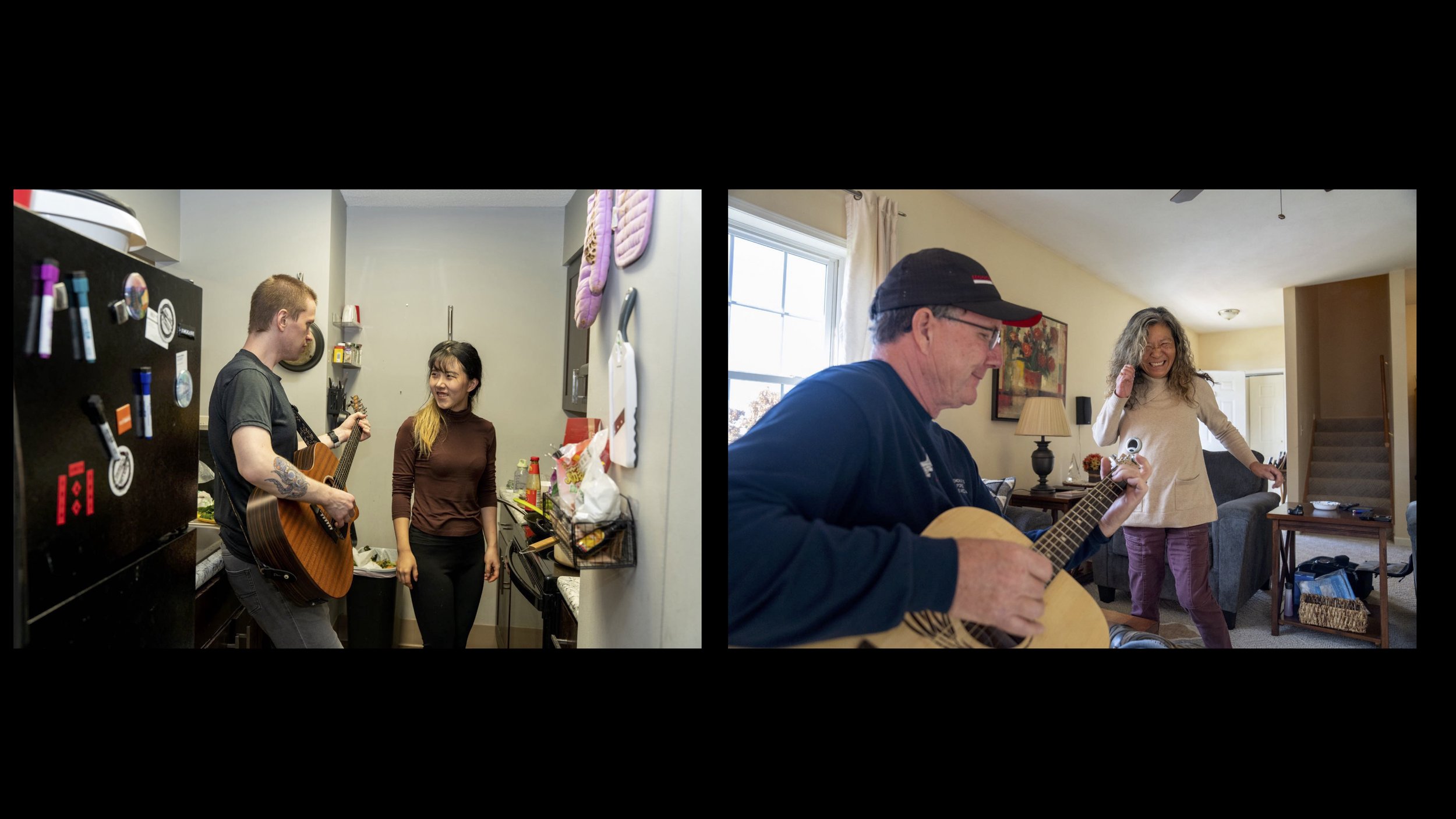
Shawn Krol and John Todd both find solace and joy in playing guitar, yet their relationship dynamics and cultural contexts give this shared passion different meanings. For Shawn, music represents a way to stay connected to his personal identity while navigating the compromises required in a cross-cultural marriage. His guitar-playing reflects Western values of individuality and self-expression, which may contrast with Naiyou’s cultural background, where leisure activities are often secondary to family obligations. This subtle tension highlights the balancing act of prioritizing personal passions within a partnership. For John, music serves as a solitary retreat, reflecting the independent rhythms of his relationship with Olivia. As a retired band member, playing guitar reconnects him to his past, while also providing a personal escape in a marriage where shared activities are rare. This generational difference underscores how hobbies can evolve from a shared experience to a means of self-care, revealing the shifting priorities and dynamics in long-term, cross-cultural marriages.

Olivia Todd holds a shell to her ear, listening for the sound of the sea—a nostalgic connection to her homeland, Taiwan. The shell serves as a symbol of her cultural roots, a memory of the past she carries with her after decades of living in the U.S. However, this quiet moment also reveals a sense of longing and disconnection, as the shell reflects a passive preservation of her heritage rather than active engagement with it. Looking out from the basement window, Olivia seems to gaze beyond her present reality, highlighting the emotional distance she feels in her relationship with John. While the shell ties her to her origins, the image suggests a deeper isolation in her current life, both culturally and relationally. This moment captures the tension between nostalgia and adaptation, showing how cultural identity can fade into memories while the complexities of long-term, cross-cultural marriages continue to evolve.